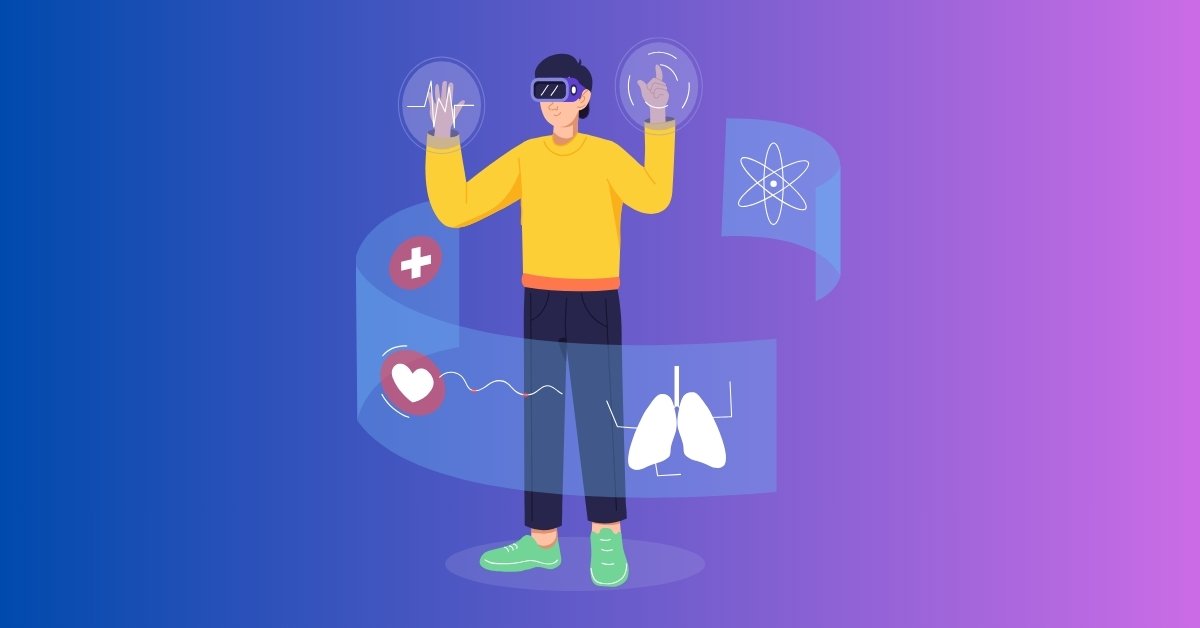How VR is Transforming Healthcare: A Developer’s Perspective

Introduction
Virtual Reality (VR) is rapidly transforming various industries, and healthcare is no exception. From medical training and patient rehabilitation to surgical planning and therapy, VR is revolutionizing how healthcare professionals and patients interact with medical technologies. As VR continues to mature, developers have a key role in shaping its future applications within the healthcare sector. Here’s how VR is making an impact on healthcare, from a developer’s perspective, and what developers should consider when creating healthcare VR solutions.
- Medical Training and Education
One of the most significant contributions of VR to healthcare is in medical education. Traditionally, medical students and professionals relied on cadavers or live patients to practice procedures, which can be limited, costly, and sometimes dangerous. VR offers a safer and more scalable solution, allowing students and doctors to practice surgeries, diagnose conditions, and explore anatomy in a fully immersive virtual environment.
For developers, the challenge is creating highly realistic and interactive simulations that accurately mimic real-life scenarios. These VR applications must not only be visually accurate but should also allow for tactile feedback through haptic devices to simulate the feeling of surgery or other medical procedures. By developing such tools, developers can create a training ground that prepares medical professionals for real-world situations without putting patients at risk. - Surgical Planning and Simulation
VR is increasingly being used in surgical planning, offering surgeons a 3D, interactive model of a patient’s anatomy. Surgeons can “walk through” a patient’s body, study critical structures, and plan their approach in a detailed and precise manner. This enables improved outcomes by allowing for more informed and accurate decision-making before surgeries are performed.
For developers, this means creating VR tools that can integrate with medical imaging systems, such as MRIs and CT scans, to produce accurate, interactive 3D models. The application must be intuitive, enabling surgeons to manipulate the model with ease while providing the capability to zoom in on specific areas of interest. - Therapy and Rehabilitation
In physical therapy and rehabilitation, VR is helping patients recover through engaging, interactive exercises that can be done from home or in a clinic. Patients with mobility issues or neurological conditions, such as stroke or spinal cord injuries, can utilize VR applications to engage in exercises in a fun, motivating, and gamified environment. These therapies help improve motor skills, coordination, and cognitive function.
Developers working in this space need to focus on creating customized therapy experiences that track patient progress and adjust difficulty levels accordingly. Integrating motion tracking and real-time data feedback is crucial for monitoring patient performance and optimizing recovery. - Patient Treatment and Mental Health
VR is also used for mental health treatment, such as exposure therapy for anxiety, PTSD, and phobias. By exposing patients to controlled, virtual environments, therapists can gradually desensitize them to their triggers in a safe and supportive space. VR can also be used for mindfulness, relaxation, and stress management, providing patients with tools to enhance their mental well-being.
For developers, the focus is on creating immersive and interactive experiences that promote therapeutic benefits. The environment should be calming, responsive, and adaptable to the patient’s progress and needs.
Conclusion
VR is reshaping healthcare by enhancing education, improving surgical planning, assisting in rehabilitation, and offering new methods for mental health treatment. As developers, it’s essential to create realistic, intuitive, and practical VR applications that can be seamlessly integrated into healthcare workflows. By doing so, we can help improve patient outcomes, support medical professionals, and bring the full potential of VR to the healthcare industry.
#VRHealthcare #MedicalTraining #SurgicalPlanning #HealthTech #Rehabilitation #VirtualReality #MentalHealth #DeveloperInsights #HealthcareInnovation #MedicalTechnology

